

Dissenters
and Nonconformists (1): Introduction & Baptists
Introduction
The widespread presence of dissenting congregations in this area was a
major reason for building St George-in-the-East, an assertion of the
status and authority of the established church. From
the 17th to the 19th centuries there were many chapels of various
traditions, starting in the City and its immediate outskirts. Most were
small but a few were sizeable, attracting big congregations.
They split and re-formed regularly over doctrinal issues - not the same
ones that concerned Anglicans! At first,
there were no national
denominations and structures, though various 'Associations'
of ministers and
congregations emerged (see below for Baptist examples); some of them
straddled the
traditions, such as the 1727 General
Body of Protestant Dissenting Ministers of the Three Denominations
[Baptist, Independent and Presbyterian]. Various charities were set up,
such as the Society for the Relief of the Necessitous Widows
and Fatherless Children of Protestant Dissenting Ministers (1733).
So for much of this period we should speak of
'Dissenters'
(their preferred term) rather than 'nonconformists'. The labels
'Independent', '(English) Presbyterian', 'Congregational' and 'Baptist'
remained fluid for some time, with clergy and members moving between
different groups. Rejection of infant baptism was sometimes a trigger,
but there were many other factors. The term 'Anabaptist' is sometimes
used for those who re-baptized adult believers, but more accurately
applies to more radical groups who also rejected involvement with civil
government. In the early period - though certainly not later - Baptists tended to be the most liberal grouping.
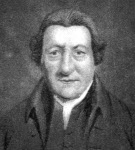 Three
local clergy examples
of this fluidity are John Cornthwaite (Presbyterian, then Baptist,
then a 'Saturday Baptist'); William Stephens (Independent, then
Congregationalist, then Baptist); and Joshua Toulmin
(1740-1815) [right],
described as a serial dissenter:
he trained at Coward's Academy
in Wellclose Square (run by his relative Dr Samuel Morton Savage) and
began his ministry as a Presbyterian in 1761,
but four years later became a Baptist; in his later years - by which
time he had been radicalised by the American and French revolutions -
he became a Unitarian. A
lay example is provided by this Baptist
Magazine obituary
of Robert Harris in 1822: at various periods of his life he
had links with the General Baptists at Prescott Street, the Calvinist
Baptists at Alie Street (where he was secretary of the Friends to the
Aged Society), the Countess of Huntingdon's chapel and Pell Street
Meeting. There was also a degree of church sharing - particularly on
the part of the 'Saturday Baptists' who hired their
church on Sundays to other congregations, not all of them
fellow-Baptists.
Three
local clergy examples
of this fluidity are John Cornthwaite (Presbyterian, then Baptist,
then a 'Saturday Baptist'); William Stephens (Independent, then
Congregationalist, then Baptist); and Joshua Toulmin
(1740-1815) [right],
described as a serial dissenter:
he trained at Coward's Academy
in Wellclose Square (run by his relative Dr Samuel Morton Savage) and
began his ministry as a Presbyterian in 1761,
but four years later became a Baptist; in his later years - by which
time he had been radicalised by the American and French revolutions -
he became a Unitarian. A
lay example is provided by this Baptist
Magazine obituary
of Robert Harris in 1822: at various periods of his life he
had links with the General Baptists at Prescott Street, the Calvinist
Baptists at Alie Street (where he was secretary of the Friends to the
Aged Society), the Countess of Huntingdon's chapel and Pell Street
Meeting. There was also a degree of church sharing - particularly on
the part of the 'Saturday Baptists' who hired their
church on Sundays to other congregations, not all of them
fellow-Baptists.
More important were the theological 'labels': for example, was a church Calvinist or Arminian? From the mid-19th century, some of the more liberal congregations - whom others labelled 'Arian' and/or 'Socinian' - embraced the new designatation 'Unitarian' (though there were no Unitarian churches in this area). Then came the various brands of Methodism, including the Countess of Huntingdon's Connexion. In our patch, we also had Lutheran and other Reformed churches, founded to serve national congregations (Danish, Norwegian, Swedish and German). Work with seamen, and other projects, was often undertaken on a 'non-denominational' basis. All these are explored in the following pages.There were also many one-off radical groups, such as the Muggletonians. There was no Quaker meeting in the parish - the nearest was Ratcliff Meeting in Brook Street [now the eastern end of Cable Street].
One distinctive Protestant group were (are - for a network remains) the Huguenots, who fled from persecution in France for Holland, Britain and America around the time that the Edict of Nantes, which in 1598 had granted religious liberty in Catholic France, was repealed in 1685. The roots of the name remain debated, but they were disciples of the French-born theologian Jean Calvin, who was exiled to Zurich; they followed his theological teachings and also his radical church order. Strictly, it would be incorrect to label the original settlers 'dissenters' or 'nonconformists', because they believed themselves to be the authentic church rather than one in reaction to the Catholic (or Anglican) establishment. But in due course they did build their own chapels - of which the most famous was the iconic building in Spitalfields (where many worked as silk weavers), built as La Neuve Église in 1743 (later a Methodist chapel, a synagogue and now a mosque).As time went on, some families made their home in the Church of England - William Dubordieu and Gabriel Tahourdin are two 18th century clerical examples from St George-in-the-East, and three 19th century incumbents and curates - Brooke Lambert, George Meggy and Samuel Secretan - were of Huguenot descent. (Richard Chartres, current Bishop of London, claims to be an 'Irish Huguenot'.) There is now a lively annual Huguenot festival around Spitalfields, celebrating their distinctive contributions to commerce, music and design.
The picture
today
Charles Booth, writing at the end of the 19th century, said that, with
a few exceptions (noted below), all
the nonconformist chapels are in difficulties, but not wiped out as in
Spitalfields. But in the 21st century, all have now gone,
save for St George's German
Lutheran Church (no longer used for weekly worship), the Strangers' Rest
Mission at 131
The Highway, and Coverdale
and Ebenezer Congregational Church in Bigland Street.
BAPTISTS
 A 1916 Baptist
Bibliography states
that between 1777-1837 there were 120
Baptist churches in
London, most of them Calvinistic, though those styled 'General' (and/or
'of
the New Connexion') were not. Some were 'Strict' (that is, practising
restricted communion, only for those regarded as doctrinally united -
see here
for a good summary of their history, and stance)
and/or 'Particular' (that is, preaching a particular view of the
atonement, that Christ died only for the 'elect' - so-called
'double predestination'). For more information
about the various
congregations and their ministers from 1668-1760, see Joseph Ivimey English
Baptists vol.3 (B.J. Holdsworth 1823) for detail, though scholars
and historians seek to go 'behind Ivimey' for the original context.
A 1916 Baptist
Bibliography states
that between 1777-1837 there were 120
Baptist churches in
London, most of them Calvinistic, though those styled 'General' (and/or
'of
the New Connexion') were not. Some were 'Strict' (that is, practising
restricted communion, only for those regarded as doctrinally united -
see here
for a good summary of their history, and stance)
and/or 'Particular' (that is, preaching a particular view of the
atonement, that Christ died only for the 'elect' - so-called
'double predestination'). For more information
about the various
congregations and their ministers from 1668-1760, see Joseph Ivimey English
Baptists vol.3 (B.J. Holdsworth 1823) for detail, though scholars
and historians seek to go 'behind Ivimey' for the original context.
Baptist
elders and ministers met weekly at
Han[n]over Coffee House in Finch Lane [near
the Royal Exchange -
transferred 1722 to the British Coffee House], and kept minutes.
In
1723/4 a
second, smaller group for Particular Baptists in
and around
London was formed, calling itself the 'Baptist Board'. George M.
Ella comments [in John Gill and the Cause of
God and Truth, 1995, p.35f]: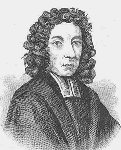 The difficulties found in adopting a common
creed prevented the Particular Baptist church and their General Baptist
brethren from enjoying true fellowship with one another, but a number
of pastors believed that if they could only persuade their fellow
office-bearers from the various Baptist churches to meet in fellowship,
eventually some form of church unity could be worked out. The venue
chosen for these ministers' fraternals or clubs, sometimes meeting
within the denomination, sometimes together, were not the Baptist
chapels, but the many coffee-houses springing up at the time in London
and other major towns. These coffee-house fratemals of special approved
pastors (club members determined who could join them, not the churches)
gradually became the true governing bodies of both the General and
Particular Baptists in the years between 1697 and 1720 when Gill
succeeded Benjamin
Keach [right]'s son-in-law Benjamin Stinton as pastor of Goat Yard.
[This church was torn apart by controversy over governance.] The difficulties found in adopting a common
creed prevented the Particular Baptist church and their General Baptist
brethren from enjoying true fellowship with one another, but a number
of pastors believed that if they could only persuade their fellow
office-bearers from the various Baptist churches to meet in fellowship,
eventually some form of church unity could be worked out. The venue
chosen for these ministers' fraternals or clubs, sometimes meeting
within the denomination, sometimes together, were not the Baptist
chapels, but the many coffee-houses springing up at the time in London
and other major towns. These coffee-house fratemals of special approved
pastors (club members determined who could join them, not the churches)
gradually became the true governing bodies of both the General and
Particular Baptists in the years between 1697 and 1720 when Gill
succeeded Benjamin
Keach [right]'s son-in-law Benjamin Stinton as pastor of Goat Yard.
[This church was torn apart by controversy over governance.] Their unifying aim was made clear right from the start as, when the Hanover Coffee House club was founded by Keach and like-minded brethren, it was done so with the recorded determination to seek union with the General Baptists.Thus by the time of Gill’s ‘preaching with a view’ at Goat Yard, it had become generally recognized by the average church members that the coffee-house brethren were their central body of elders who were to officiate at the ordinations of local deacons and pastors. In effect the coffee-house fraternals had become not churches within churches, but governing church bodies outside of the churches. These ‘elders’ had formerly criticized the House of Bishops for their aloofness from and authority over the Anglican churches but they had, in effect, become a House of Bishops themselves. The only difference was that the Anglican bishops met in Lambeth Palace whereas the Baptist bishops met over a bowl of tobacco provided for the occasion in a London coffee-house of far more humble nature. It would seem most odd that the London coffee-houses should be so closely associated with the development of Baptist history. Whitely [A Baptist Bibliography 1916] argues that as the armed forces, civil administration and municipal services–he could have added much of the academic world including all of the English universities–were closed to Baptists, they had only farming and commerce left to turn to as a means of livelihood. A number of Baptists, including pastors and the widows of pastors, thus set up coffee-houses in London to rival the taverns and also provide meeting-places for the numerous clubs and societies which were springing up at the time. James Jones of Southwark, a Baptist pastor and contemporary with Keach, combined being a tailor and coffee-house keeper with his quite enormous pastoral duties. As Harold Hunt, who quotes Ella's words here, says,The two goals of these fraternals were (1) to unite the Arminian General and the Calvinistic Particular Baptists, and (2) to regulate the churches. They were self-perpetuating; they determined who could belong to their number. They operated outside the churches, and exerted authority over the churches. They decided grievances within churches, and between churches. They decided who could be ordained, and they provided the presbytery. They provided the Baptists with a functioning hierarchy. The Baptists had complained bitterly against the Anglican episcopacy, but there is no discernible difference between the Anglican episcopacy and these Baptist coffee-house fraternals. Unscriptural though they were, they exercised authority over the Baptist churches until John Gill brought them to their knees in 1720. |
(STRICT
&) PARTICULAR BAPTISTS - CALVINISTS
Particular Baptists, Wapping / Little Prescot Street / Commercial Street
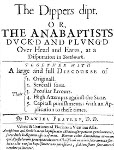
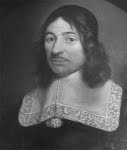 What
is claimed to be the oldest continuous Baptist congregation began in
1633, when a cobbler, John
Spilsbury, and others left the Independent Calvinist church founded
in
1616 led by John Lathorp to establish a 'New Testament' church, on
confessional and 'covenant' principles. The reason for their leaving
has been much debated, since documentary sources (such as the so-called
'Kiffin
manuscript' - William
Kiffin, 1616-1701, right) are
uncertain: was it an amicable split to set up a 'church plant', or did
it turn on baptismal discipline? One version says that, having become
convinced that infant baptism was invalid, they were re-baptized by
sprinkling, and again (via the Dutch Mennonites) by immersion. It's
also said that John
Smyth, at the time Vicar of Gainsborough and Mennonite sympathiser,
in the absence of another minister baptized himself this way
(so-called 'se-baptism'), and then his congregation, in the River Don -
but
all this is unlikely. Debate raged over 'New Whittsittism'; see too Daniel Featley's
provocative work The dippers dipt, or, The Anabaptists
duck'd and plung'd over head and ears...
What
is claimed to be the oldest continuous Baptist congregation began in
1633, when a cobbler, John
Spilsbury, and others left the Independent Calvinist church founded
in
1616 led by John Lathorp to establish a 'New Testament' church, on
confessional and 'covenant' principles. The reason for their leaving
has been much debated, since documentary sources (such as the so-called
'Kiffin
manuscript' - William
Kiffin, 1616-1701, right) are
uncertain: was it an amicable split to set up a 'church plant', or did
it turn on baptismal discipline? One version says that, having become
convinced that infant baptism was invalid, they were re-baptized by
sprinkling, and again (via the Dutch Mennonites) by immersion. It's
also said that John
Smyth, at the time Vicar of Gainsborough and Mennonite sympathiser,
in the absence of another minister baptized himself this way
(so-called 'se-baptism'), and then his congregation, in the River Don -
but
all this is unlikely. Debate raged over 'New Whittsittism'; see too Daniel Featley's
provocative work The dippers dipt, or, The Anabaptists
duck'd and plung'd over head and ears...
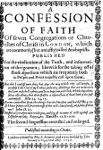 Spilsbury was a signatory both of the 1644 'Confession of
Faith of seven Congregations or Churches of Christ in London, which
are commonly (but unjustly) called Anabaptists' [title page right] and the 1659 Declaration
of several of the People called Anabaptists; he also wrote one of
many contemporary works on baptism, A
treatise concerning the lawfull subject of baptisme
(1643, which he revised in 1652). [He is not to be confused with his
namesake, the mapmaker and engraver (1739-69) who invented the first
jigsaw puzzle in 1767.]
Spilsbury was a signatory both of the 1644 'Confession of
Faith of seven Congregations or Churches of Christ in London, which
are commonly (but unjustly) called Anabaptists' [title page right] and the 1659 Declaration
of several of the People called Anabaptists; he also wrote one of
many contemporary works on baptism, A
treatise concerning the lawfull subject of baptisme
(1643, which he revised in 1652). [He is not to be confused with his
namesake, the mapmaker and engraver (1739-69) who invented the first
jigsaw puzzle in 1767.]
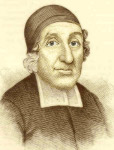 In the 1650s the congregation met in Coleman Street
(subsequently George Yard) in Whitechapel, where John Watson (also a signatory of the
1644 Confession) and Hanserd Knollys
ministered. Knollys (1598-1691), left,
was formerly an Anglican minister in the diocese of Lincoln, who had
fled for a time to New England. The congregation then moved to Wapping
- Meeting House Alley, or Yard
(between Broad Street and Old Gravel Lane), in rented premises which
they may have shared with an Independent congregation. But their
meetings remained illegal. Knollys was detained on several occasions,
under the 1670 Conventicles
Act, though in his latter years was treated with consideration,
and allowed to preach to his fellow-prisoners.
In the 1650s the congregation met in Coleman Street
(subsequently George Yard) in Whitechapel, where John Watson (also a signatory of the
1644 Confession) and Hanserd Knollys
ministered. Knollys (1598-1691), left,
was formerly an Anglican minister in the diocese of Lincoln, who had
fled for a time to New England. The congregation then moved to Wapping
- Meeting House Alley, or Yard
(between Broad Street and Old Gravel Lane), in rented premises which
they may have shared with an Independent congregation. But their
meetings remained illegal. Knollys was detained on several occasions,
under the 1670 Conventicles
Act, though in his latter years was treated with consideration,
and allowed to preach to his fellow-prisoners.
John Norcott
led the congregation from 1670 to his death in 1676; he had been
ejected in 1662 from Anglican ministry in a Hertfordshire parish, and
was regularly harrassed for conducting illegal and 'riotous'
assemblies. He too wrote a book on baptism: Baptism
discovered plainly and faithfully according to the word of God. Wherein
in set forth the glorious pattern of our blessed Saviour, Jesus Christ,
the pattern of all believers in their subjection to baptism - which
went through many editions: 1672, 1675 (with a preface by William
Kiffin & Richard Claridge), 1694, 1700, 1709, 1721, 1722, 1723,
1740, 1801, 1878 ('corrected & altered' by C.H. Spurgeon) and 1911.
Hercules
(or William) Collins was
the next pastor. Here are two incidents from the minute book from his
time:
 At
the Church Meeting in ole Gravell Lane the 25th of December 1677 was
John Okey Cut off and Excommunicated from all the priviledges of the
gospel for the sin of lying and Revilling and for Refusing to hear the
Church: together with his Invocating the God of Heaven to cut off and
destroy Bro: Collings [sic] and saying also that he would be Revenged. [Okey
had prayed that God would strike Collins dead. Was he perhaps the son
of his namesake, and fellow-Baptist, who was executed for treason for
his complicity in the death of Charles I in 1662?] At
the Church Meeting in ole Gravell Lane the 25th of December 1677 was
John Okey Cut off and Excommunicated from all the priviledges of the
gospel for the sin of lying and Revilling and for Refusing to hear the
Church: together with his Invocating the God of Heaven to cut off and
destroy Bro: Collings [sic] and saying also that he would be Revenged. [Okey
had prayed that God would strike Collins dead. Was he perhaps the son
of his namesake, and fellow-Baptist, who was executed for treason for
his complicity in the death of Charles I in 1662?] On Christmas Day 1679: The Congregation in old Gravell Lane Did then Raise and give to Bro. Benj. Keach when he was Robed the Sum of Three pound five shillings [they added a further three shillings in the following days before the gift was handed over]. |
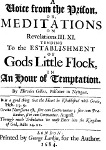 By
1686, there were 387 members, with a large
turnover not only through death, but by excommunication or default of
various kinds - discipline against those who became Quakers, Seventh
Day Baptists or those who presented children for Anglican baptism
was
strict. Days of prayer, fasting and humiliation were observed in what
were difficult times - especially from 1683-7, when persecution was
fierce; the chapel was abandoned and they met in private houses. In
1684 Collins was imprisoned in Newgate for a time (where he wrote A Voice from the Prison [right], based on Rev 3.11), and was fined the huge
sum of £100. But in anticipation of the 1689 Toleration
Act (allowing
dissenters to own property) they planned a purpose-built chapel in
Wapping, with a
lease on land in 'James Street' - never named as such on maps, but
almost certainly on Johnson Street, on the west side of Broad Street -
which thus became the earliest authorised Baptist chapel. Almost
immediately it was found to be too small, and galleries were added. It
also had
one of the first dissenting burial grounds. Church members were buried
free of charge, but in 1699 others paid 40/- (20/- for a child), to be
paid to the Deacons for the poor, plus 10/- for a headstone and 30/-
for a stone over the ground. In due course, they also established a
purpose-built house in Artichoke Lane, Wapping (some way from what
became Artichoke Hill), seating
200.
By
1686, there were 387 members, with a large
turnover not only through death, but by excommunication or default of
various kinds - discipline against those who became Quakers, Seventh
Day Baptists or those who presented children for Anglican baptism
was
strict. Days of prayer, fasting and humiliation were observed in what
were difficult times - especially from 1683-7, when persecution was
fierce; the chapel was abandoned and they met in private houses. In
1684 Collins was imprisoned in Newgate for a time (where he wrote A Voice from the Prison [right], based on Rev 3.11), and was fined the huge
sum of £100. But in anticipation of the 1689 Toleration
Act (allowing
dissenters to own property) they planned a purpose-built chapel in
Wapping, with a
lease on land in 'James Street' - never named as such on maps, but
almost certainly on Johnson Street, on the west side of Broad Street -
which thus became the earliest authorised Baptist chapel. Almost
immediately it was found to be too small, and galleries were added. It
also had
one of the first dissenting burial grounds. Church members were buried
free of charge, but in 1699 others paid 40/- (20/- for a child), to be
paid to the Deacons for the poor, plus 10/- for a headstone and 30/-
for a stone over the ground. In due course, they also established a
purpose-built house in Artichoke Lane, Wapping (some way from what
became Artichoke Hill), seating
200.
Collins was a prolific writer, beginning with his Orthodox
Catechism
in 1680, for preventing the
Canker and Poison of Heresy and Error
(a
Particular Baptist version of the 1562 Heidelburg Catechism -
and includes the first Baptist foray into the question of
congregational
singing, which he supported - this was to become controversial); works
on baptism, Some
Reasons for Separation from the Church of England
(1682), the sovereignty of God - Mountains of Brass, or, A
Discourse
upon the Decrees of God (1690), and ending in his dying year
(1702) with The
Temple Repair’d: Or, An Essay to
revive the long neglected Ordinances,
of exercising the Spiritual Gift of Prophecy for the Edification of the
Churches; and of ordaining Ministers duly qualified. With proper
Directions as to Study and Preaching, for such as are inclin’d to the
Ministry - a plea for
proper ministerial training! Many of his writings can be read here.
Subsequent ministers were Edward
Elliott (from 1704), William
Curtis (from 1718), and Clendon
Dawkes
(1719-26). Dawkes was from Wellingborough, and like Curtis joined the
Han[n]over-house
Coffee Club,
in 1721; however, when his health failed
(his obituarist suggested this was the result of too much study) and
he went to the country, it was to the newly-founded and smaller Baptist Board
that his congregation referred: their minutes of 30
November 1724 report
| Whereas two Messengers applyed to this Board, desird an advice Concerning their Present Circumstances wth Relation to Mr Dawkes, their Pastor, they were advised to send Messengers, to him into the Country Cloathd wth the authority of the church to Lay before him and advise wth him concerning the Declining State of the Church and in the most tender Manner acquaint him that if he should remain incapable of Serving them to Seek for other assistance. |
In 1726 Dawkes became the minister of the church at Collier's Rents, White Street, Southwark (founded in 1695 by Richard Robbins, becoming Baptist in 1698 and joining the London Baptist Association in 1704 under Richard Parkes - but not contributing to the Particular Baptist Fund as Parkes was one of three ministers who voted at Salter's Hall against subscribing to any human articles of faith). In 1725 the Han[n]over Club had declined to intervene in a quarrel over a catechetical lecture - Parkes was one of the original members of the rival Baptist Board. But Dawkes' stay there was brief: they favoured mixed or open communion, and he did not. The Board's minute of 18 April 1726 records
| Read a petition from the people meeting in White Street concerning ye difference between them & Mr Dawk's, desiring advice from the Board how to act in their present circumstances. The answer that was returned by ye board was as follows: That with regard to such things as are of a civil nature between them & Mr Dawk's, it did not lie before them; and as to those wch respected their Church communion, it was their advice that they endeavour to act according to the light of their conference & keep up their Church state if possible. |
Dawkes
left in 1730, and a few years later became the pastor of the afternoon
congregation at Devonshire Square; when this dissolved in 1751 he
became the minister of the Baptist church at Hemel Hempstead, where he
died in 1758. He is said to have been a
learned man and an acceptable preacher; his religious sentiments
were high Calvinism but he seems to have carried himself with
moderation towards his brethren. Mr Brine, in his funeral
sermon, said He was meek, humble and
modest, wise and learned, diligent in study there is reason to think to
the prejudice of his constitution. He had an enlarged
acquaintance with the evangelical scheme, and a spiritual savour of the
truths of
the gospel. In his last long illness, which issued in his death, he was
remarkably favoured with the gracious presence of God, and filled with
a
holy adoration of sovereign grace and mercy. Those glorious truths
which in the course of his ministry he recommended to you, were the
matter of his support, consolation and unspeakable joy, in the views of
his dissolution.
Samuel
Wilson was
the next minister, from 1726-50; from a Presbyterian family, he had a
'liberal' education at Gresham's College (though some say his literacy
was limited), and became a Baptist because
of his convictions about adult baptism, which towards the end of his
life he summarised in A Scripture Manual. He lectured
against the Socinian James
Foster; his published sermons and other writings are listed here.
Here
is a memoir of his life, and
here his funeral sermon, which includes these words:
 During his time, in 1730 and after 43
years in the Wapping
chapel, the congregation moved to
new premises in Rosemary Branch
Alley [Little Prescot Street],
in Goodman's Fields. (Some may have remained at the old chapel for a
few years:
Robert Seymour's 1735 Survey
of the Cities of London & Westminster
- a part-published update of the work the Elizabethan chronicler John
Stow - mentions on p705 an Anabaptist congregation in Meeting House
Yard.) The wealthy historian Josiah Thompson
was a member of the new chapel; so was William Taylor, a hosier of
Newgate Street (the last person to be baptized by Samuel Wilson), who
founded what in 1810 became the Baptist Academical Institution (for
training ministers) in Stepney [right].
During his time, in 1730 and after 43
years in the Wapping
chapel, the congregation moved to
new premises in Rosemary Branch
Alley [Little Prescot Street],
in Goodman's Fields. (Some may have remained at the old chapel for a
few years:
Robert Seymour's 1735 Survey
of the Cities of London & Westminster
- a part-published update of the work the Elizabethan chronicler John
Stow - mentions on p705 an Anabaptist congregation in Meeting House
Yard.) The wealthy historian Josiah Thompson
was a member of the new chapel; so was William Taylor, a hosier of
Newgate Street (the last person to be baptized by Samuel Wilson), who
founded what in 1810 became the Baptist Academical Institution (for
training ministers) in Stepney [right].
When
Wilson died,
they invited Benjamin
Beddome (who had been a student at the church, and became a
hymn writer) to become the
minister, writing
both to him and to his church in Bourton: they declined to release him.
Some then wanted to appoint James Fall, from Horsleydown, but after a
vote Samuel Burford was
offered the post - he was related by marriage to Stephen Williams, one
of the deacons. He came from Lyme
in 1755, and died in 1768, aged 42
(leaving a wife and young family). Some of Fall's supporters left and
set up the Church
of Christ in Little Alie Street. [We
are grateful to Alison Botterill and Fiona Duxbury for this
information; some of their research has been included in Derek Morris'
recent book on Whitechapel.]
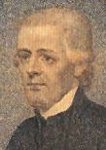 Abraham
Booth
(1734-1806) was the next pastor, for 37 years until his death. He came
from a humble background in Nottinghamshire, which made him a
surprising choice for a sophisticated congregation, but he became a
prolific and widely-read writer - and his books have been reprinted in
modern times. The
most famous isThe Reign of
Grace from its Rise to its Consummation (1767), written
shortly before the start of his pastorate here; it can be read online here,
together with a memoir and other writings.
He also preached against slavery (for example, a 1792 sermon at the
chapel Commerce in the Human
Species, and the Enslaving of Innocent Persons, Inimical to the Laws of
Moses and the Gospel of Christ), as well as on
specifically Baptist doctrines. Formerly a General Baptist, he became
an apostle of high (one commentator says exaggerated) Calvinism. In an
otherwise positive review of
his life and writings, William Jones
in 1806 felt he had been less than candid in rebutting the charge that
he taught Sandemanianism
- the belief that mere assent to the gospel, without evidence of grace,
is sufficient for salvation. He was a prime mover in setting up the
training college that would become
Regent's Park
College in Oxford, and was the first London Baptist pastor to
support the new
Baptist Missionary Society. His will began
Abraham
Booth
(1734-1806) was the next pastor, for 37 years until his death. He came
from a humble background in Nottinghamshire, which made him a
surprising choice for a sophisticated congregation, but he became a
prolific and widely-read writer - and his books have been reprinted in
modern times. The
most famous isThe Reign of
Grace from its Rise to its Consummation (1767), written
shortly before the start of his pastorate here; it can be read online here,
together with a memoir and other writings.
He also preached against slavery (for example, a 1792 sermon at the
chapel Commerce in the Human
Species, and the Enslaving of Innocent Persons, Inimical to the Laws of
Moses and the Gospel of Christ), as well as on
specifically Baptist doctrines. Formerly a General Baptist, he became
an apostle of high (one commentator says exaggerated) Calvinism. In an
otherwise positive review of
his life and writings, William Jones
in 1806 felt he had been less than candid in rebutting the charge that
he taught Sandemanianism
- the belief that mere assent to the gospel, without evidence of grace,
is sufficient for salvation. He was a prime mover in setting up the
training college that would become
Regent's Park
College in Oxford, and was the first London Baptist pastor to
support the new
Baptist Missionary Society. His will began
| I, Abraham Booth, Protestant Dissenting Minister, in
the parish of St.
Mary, Whitechapel, London, reflecting on the uncertainty of life, do
make this my last Will and Testament, in manner following: Being firmly persuaded that those Doctrines which have constituted the grand subject of my public ministry, for a long course of years, are Divine Truths; being deeply sensible that all I have, and all I am, are the Lord's, and entirely at his disposal; and being completely satisfied that his dominion is perfectly wise and righteous;— I, in the anticipation of my departing moment, cheerfully commend my Immortal Spirit into his hands, in expectation of Everlasting Life, as the Gift of Sovereign Grace, through the Mediation of Jesus Christ; and my Body I resign to the care of Providence in the silent grave, with a pleasing hope of its being raised again at the last day, in a state of perpetual vigour, beauty, and glory. |
William Stephens (1756-1839) found Booth a hard act to follow. He began ministry as an Independent, then as a Congregationalist, and then served with Haldane and taught at his Edinburgh Tabernacle (Scottish-style Wesley and Whitefield), before receiving believer's baptism in the Waters of Leith. A year later, in 1807, he came to Prescott Street as a Baptist. During his brief time, 31 members seceded, for Artillery Street: Stephens too was suspected of being Sandemanian, and when he moved to Manchester in 1810, and to Rochdale seven years later, he was challenged on the issue by William Gadsby.
Thomas
Griffin followed, then from 1832 to 1883 Charles Stovel. He was active
in the anti-slavery cause - pictured below
among those at the 1840
Anti-Slavery Convention (Benjamin Robert Haydon, National Portrait Gallery): he
encouraged Baptist missionaries in the West Indies to buy land and
sell small plots affordable to former slaves. The congregation was
among those presenting petitions to the House of Lords in 1838 for the
emancipation of negro apprentices (see here for
Baptist involvement in the anti-slavery cause). Other 'political'
publications included editing A Necessity of Separation from
the Church of England Proved by the Nonconformists' Principles
(1849); a lecture India:
its crimes and claims (1857); a letter to Lord Henley on Church
Reform; and Pacification!!!
A Letter to Earl Russell on Church Emancipation in Ireland
(1868). But much of his writing was on the doctrine of baptism,
beginning with a Letter
on Baptismal Regeneration to Evangelical Pædobaptists in 1842 and Lectures
on the Baptismal Regeneration Controversy (1843, delivered in
Woolwich), and Christian
Discipleship and Baptism (1846) -
eight lectures in reply to
the theory advanced by Dr. Halley in the Congregational Lecture of
1843. Halley in turn responded the following year, and The
Baptismal Reconciliation (1848) ended the sequence. Other works
included Hints on the
Regulation of Christian Churches (1835); Pastoral
Appeals on Conversion (1837); The
Dreadful Requisition, or a
treasise on the righteousness of God in punishing the neglect of souls
(1837); sermons Evangelical
Resource (1856) and Humble Benevolence exemplified
and rewarded in the life of William Shawcroft ; The
Two Sisters; or, Zeal Rewarded (1859); The Church of Christ in
England (1862). He gave the inaugural address at the 1874
sessions of the Baptist Union; and extant is a graveside sermon of 1855
at Abney
Park, the great nonconformist cemetery in Stoke Newington, now a
nature reserve. His Preparations
for Pulpit Exercises in Little Prescot Street Meeting House
were edited and published by William Willis (a county court judge) in
1888. He was quoted by Lord Shaftesbury in a House of Lords debate
about special services in theatres - see here for details.
James
Grant's Metropolitan
Pulpit of 1839 printed
this assessment - imagine publishing something similar today!
During
Stovel's time the chapel moved. The
Baptist Recorder
of 1851 said of the old Little Prescot Street chapel
The
result was
that a new chapel, in Commercial Street, was opened in 1855, at a cost
of £10,500 (less £6,560 raised from the former premises). The Primitive
Church Magazine noted
There were two Calvinistic Baptist chapels, both 'Strict and Particular' (see above), both in Alie Street.
Church of Christ,
Little Alie Street - varieties of 'high Calvinism'
This congregation's life began in 1750, when members of the Little
Prescot Street chapel who wanted James
Fall as
their next minister broke away. Fall, from Croydon, was ordained in the
Independent chapel in Crispin Street, Spitalfields in 1754, with his
father presiding. A few months later they moved into their new meeting
house in Little Alie Street; it was,
said a later observer, a somewhat
small chapel. Fall's life was short
and tumultuous - he died in 1756. William Dowers
was
the minister from 1757-95. His obituary sermon by Curtis Fleming,
together with two hymns and
an oration at his interment by the Rev. Richard Hutchins, were
published in 1795.
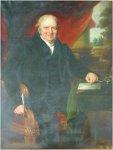 In 1789 the
deacon Mr Fleming
baptized William
Winterbotham [left] 'on profession
of faith', in the
river at Old Ford. Winterbotham had renounced infant baptism and the
Countess of Huntingdon's Connexion, and became a Baptist minister. An
orthodox and radical Calvinist, he was tried
for sedition in 1792. The court claimed, If ever the trumpet
of sedition was sounded in
the pulpit it was done in this instance. He was in
prison from 1793-97, during which he wrote books about China and the
United States.
In 1789 the
deacon Mr Fleming
baptized William
Winterbotham [left] 'on profession
of faith', in the
river at Old Ford. Winterbotham had renounced infant baptism and the
Countess of Huntingdon's Connexion, and became a Baptist minister. An
orthodox and radical Calvinist, he was tried
for sedition in 1792. The court claimed, If ever the trumpet
of sedition was sounded in
the pulpit it was done in this instance. He was in
prison from 1793-97, during which he wrote books about China and the
United States.
When Dowers died, the chapel was at a low ebb; it closed for a short
time. Prescot Street then supplied a minister for a year until William
Shenstone took charge from 1797 until
his death (aged 62) in 1833; until 1795 or so he had been a General
Baptist. During his time 680 members were admitted.
He lived in Bedford [now Ford] Square, behind the London Hospital. In
1799 was produced A declaration
of the faith and practice of the
Church of Christ, in Little Alie-Street, Goodman's-fields. By
1842
this had become a set of 'Articles of Faith' and was copied elsewhere.
In 1807 a group of 'super-lapsarians' (the hyper-Calvinist insistence
that the fall from grace had to happen so that God could act to show
mercy
in Christ - they objected to preaching to sinners or praying for them)
left for Mr Franklyn's
church in Red Cross Street, because Shenstone did not preach to
deny all ungodliness. In 1815 Shenstone published Vestry hymns,
or,
Effusions of the heart: being a collection of original hymns on
experimental subjects: particularly adapted to prayer meetings. In
1825 he provided
gifts of clothing for the children of Alie Street School, and a winter
shawl for the mistress. His brother John, who died in 1844, was
minister of the Seventh Day Baptist
chapel in Finsbury, and Shenstone provided pastoral support for the
Mill Yard congregation when it closed temporarily in 1826 (even
though they were 'General' - as he once had been - rather than
'Particular').
In
1832 the congregation tabled a petition praying the members of
the House of Lords so far
as in them lies, to avert the impending Storm of
Divine Vengeance, by passing a Law for the speedy and total Abolition
of Slavery in all His Majesty's Dominions.
The Primitive
Church
Magazine of 1846 records that the next
minister, Philip Dickerson
(1833-71 - he had been Shenstone's assistant for a couple of years) had
congregations in the morning and evening
from 400 to 500, and 392 church members, plus a Sunday School, a Sick
Visiting Society, a Friend-in-need Society for assisting poor
lying-in-women. (In 1848 a Mrs Gordelier died of apoplexy during the
final hymn at a service; at her funeral Dickerson improved the occurrence by a sermon to a
very crowded congregation.) He was described as an amiable and devoted man;
in 1866 a tea meeting was held at the chapel to mark his 50th
anniversary as a minister, when he was presented with a purse
containing 50 sovereigns and a silver cream jug bearing a suitable inscription. He
died in 1882 aged 87, having relinquished his charge to his co-pastor Charles Masterson in 1871. The
chapel closed briefly for repairs in 1876. Masterson moved to Brighton
in 1883, and Robert Edward Sears
was the minister for the next twelve years before moving to Providence
Church, Battersea. Sears had been pastor at Laxfield in Suffolk for
some years - see this 1866
address - and in 1875 published The Gospel of the Tabernacle.
Sunday attendance, according to the 1886 religious
census, was 141 (morning) and 163 (evening). He was followed by Mr McKee and Mr Banks. The Booth Archives contain
an interview
with Mr Palmer, greengrocer and Sunday School
superintendent. According to Mrs Basil
Holmes, writing in 1904, they had used Sheen's
burial ground; in recent
years this has been exhumed by Cherished
Land Ltd. When the lease expired in 1921, the opportunities for usefulness in the
neighbourhood seemed to be so scant that the chapel closed, and
Jewish tenants took on the site.
Zoar
Chapel, Great Alie Street
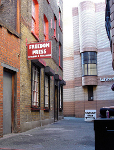 Another congregation with a long, though complex,
history began in 1698, when Elias
Keach, son of the famous preacher Benjamin Keach,
brought a congregation from Wapping to Whitechapel, having met for a
time at Tallow Chandlers' Hall in the City. By the time of his
successor John Nicholls
in 1714 they were in Angel Alley, near Petticoat Lane (behind what is
now the Whitechapel Gallery extension, and the home of Freedom Press,
Britain's largest anarchist bookshop - right). They split over his
successor
John/Thomas/Edward [all three names were used!] Ridgway since he had not been
ordained with the laying-on of hands; some went to Glover's Hall,
others remaining at Angel Alley, with William
Collins as minister from 1749; then Thomas Davis, a stonemason; and from
1763 John Allen, a
linen-draper, who proved to be a voluminous
author of a high Calvinist type and was eventually expelled.
His successor was Christopher Hall,
in whose time the congregation migrated elsewhere.
Another congregation with a long, though complex,
history began in 1698, when Elias
Keach, son of the famous preacher Benjamin Keach,
brought a congregation from Wapping to Whitechapel, having met for a
time at Tallow Chandlers' Hall in the City. By the time of his
successor John Nicholls
in 1714 they were in Angel Alley, near Petticoat Lane (behind what is
now the Whitechapel Gallery extension, and the home of Freedom Press,
Britain's largest anarchist bookshop - right). They split over his
successor
John/Thomas/Edward [all three names were used!] Ridgway since he had not been
ordained with the laying-on of hands; some went to Glover's Hall,
others remaining at Angel Alley, with William
Collins as minister from 1749; then Thomas Davis, a stonemason; and from
1763 John Allen, a
linen-draper, who proved to be a voluminous
author of a high Calvinist type and was eventually expelled.
His successor was Christopher Hall,
in whose time the congregation migrated elsewhere.
 However,
in 1808 John Bailey obtained
possession of the Great Ayliffe [Alie] Street chapel in
Goodman's Fields, a few yards from Red Lion Street [top left corner of
the 1868 map left], built in 1748
for a Presbyterian congregation which had gone into decline [see here
for its history, including the work of Isaac Smith, writer of
hymn-tunes]. It became Zoar Chapel, and a leading 'Gospel Standard'
congregation [see below].
Zoar
was the only 'city of the plain' not destroyed along with Sodom
(Genesis 19), and is mentioned in Isaiah 15.5 as a 'place of refuge':
hence it became one of the names chosen for chapels of a particular
character.
However,
in 1808 John Bailey obtained
possession of the Great Ayliffe [Alie] Street chapel in
Goodman's Fields, a few yards from Red Lion Street [top left corner of
the 1868 map left], built in 1748
for a Presbyterian congregation which had gone into decline [see here
for its history, including the work of Isaac Smith, writer of
hymn-tunes]. It became Zoar Chapel, and a leading 'Gospel Standard'
congregation [see below].
Zoar
was the only 'city of the plain' not destroyed along with Sodom
(Genesis 19), and is mentioned in Isaiah 15.5 as a 'place of refuge':
hence it became one of the names chosen for chapels of a particular
character.
In 1810 The Poor Pilgrim was included in a series of Letters, being some account of the Life and Experience of John Bailey, Pastor of the Particular Baptist Church at Zoar-Chapel, Great Alie Street, Goodman's Fields. He also produced a hymnbook Sion's Melody. He died in 1830, aged 52, after some years of ill-health. Thereafter, although John Austin became pastor in 1832, the chapel relied on 'mutual oversight' and it served as a particular venue for visiting preachers of 'sound views', also publishing a monthly directory of chapels where 'faithful' men could be listened to. The sermons of some of the famous names of the day who preached here are still in print [samples here], such as
 William
Gadsby
(1773-1844) of Manchester, who as well as 12,000 sermons produced a
widely-used hymnbook, a set of rules for church discipline which were
widely-followed, and in 1835 started, with his son, the conservative Gospel Standard
magazine William
Gadsby
(1773-1844) of Manchester, who as well as 12,000 sermons produced a
widely-used hymnbook, a set of rules for church discipline which were
widely-followed, and in 1835 started, with his son, the conservative Gospel Standard
magazine |
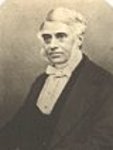 Joseph Charles
Philpot (1802-69), 'the Seceder' (an ex-Anglican) who edited Gospel Standard for
twenty years Joseph Charles
Philpot (1802-69), 'the Seceder' (an ex-Anglican) who edited Gospel Standard for
twenty years |
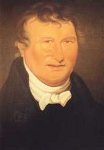 John Warburton (1776-1857) |
John Kershaw (1792-1870), pastor of Hope Particular Baptist Chapel, Rochdale for 53 years [not to be confused with a Methodist namesake 1766-1810, a ship's surgeon from Whitby who later settled in Stoke Newington] |
Around
the time of the ritualism riots at the parish church, they became
embroiled in a rather different controversy, over the eternal Sonship
of Christ, which others at the time were denying as unbiblical. On 11
December 1860 they issued this resolution
| That this church hold the faith which they believe to be the faith of God's elect, and revealed to their souls by the power of the Holy Ghost, and in the written word of God, that our Lord and Saviour Jesus Christ is, and ever was, the eternal Son of God in his Divine nature and Person from all eternity, that had he never taken our nature upon him, had no worlds been formed, angels erected, or church chosen, God the eternal Father, God the eternal Son, and God the eternal Spirit would have existed in co-equal and co-eternal union, essence, nature, Persons, and relationships, in one all-glorious God; and that the same glorious Person who now sitteth at his Father's right hand, glorified with the glory he had with him before the World was, and clothed ina body like our own, in his twofold nature and complex Person, is the co-eternal Son of God, the immortal Son of man. |
This was argumentatively and nit-pickingly taken up by William Palmer of Homerton in Eternal Generation Derogatory to all the Persons in the Holy Trinity, but especially to the Persons of the Son and Holy Ghost. The magazine The Gospel Standard came to Zoar's defence, at considerable length.
Charles
Booth commented, in 1902, that this is
a very old-fashioned looking place with high-backed pews, and the
pastor sits aloft in a tall wooden pulpit. The congregation comes from
almost everywhere except the immediate neighbourhood [he
compared this with a nearby church of the opposite extreme: the
anglo-catholic St Augustine, Settle Street].
Some of those who come from the greatest distance stay all day on
Sunday, arranging to dine, and bringing their children with them for
the afternoon school. Forty or so come also to the week-night services
... and the chapel is nearly half-filled for the two Sunday services.
It is by the strictness and exclusiveness of their doctrine and the
terms of church membership that the congregation is bound together. See
here
for his further comments about their inability to unite with other
struggling Baptist congregations because of doctrinal divisions.
The
1886 religious
census lists attendance as 243 (morning) and 247 (evening) - still healthy numbers, though
the area was changing rapidly. Eli
Ashdown
was the pastor for 23 years until his death in 1904; be was born in
1831, and had previously ministered at Providence Strict Baptist Chapel
in Burgess Hill, which he helped to establish. James Kidwell Popham preached his
funeral sermon at Dicker in Sussex, and wrote the preface to Ashdown's
autobiography Gleanings
by a Watchman on a Dark Corner of Zion's Walls
published in the same year; they had been associates since 1885, and he
had contributed to a brief history of the chapel in 1889. Popham, for
55 years the minister of Galeed chapel in Brighton and editor of The Gospel Standard
from 1905-37, then took oversight of the chapel, travelling up once a
month to preach. When the chapel was condemned as unsafe in 1909,
Popham preached the final
sermon, on Isaiah 6.5, noting the
last service in the dear old chapel, which was built in 1698. In
his address he said How
many were born and nourished there during the long period of 200 years,
the Lord alone knows. But He seems no longer to have need of the
place. This is solemn. It may well cause searchings of heart to the
remnant who have had to seek another place in which to meet. A familiar
landmark is moved. An ancient fold is taken away. The Lord, the Good
Shepherd, watch over the sheep in this cloudy and dark day! They
have our sympathy. May they have the presence, love and power of Christ
with them in their new meeting place. Then, though they miss their
hoary Zoar, they will find their true Object of worship, hope,
confidence and love; and union with Him will cause them to cleave to
each other in Him, and seek his glory. Little Alie Street
Synagogue was established on the site, until its closure in the 1920s;
it was later a warehouse.
The Dickensian magazine of September 1913 claimed that the old Zoar chapel was the model for 'Little Bethel', where Kit's mother Mrs Nubbles received 'prolonged spiritual nourishment' in The Old Curiosity Shop. The chapel, said the writer (whose mother had been a member of the congregation), was
| a fine specimen of a seventeenth century conventicle, with a great deal of old oak about it and a handsome pulpit, and when Mr. Quilp came to it in pursuit of Kit's mother, it probably took him ten minutes to walk there from his house at Tower Hill. In the early part of the nineteenth century it was a place of considerable influence among the strict Baptists (who are the same body as those known in America as the 'Hard Shell Baptists', their distinguishing tenets being that they permitted none to take communion with them except those who belleved in the doctrine of election, and had undergone the rite of baptism by immersion) ... This side of Zoar Chapel life, which Dickens noted In 1840-41, was described with precision and truth; he captured the phraseology of the place completely. All the comedy he said was there; the people at the place were tremendously in earnest in all they did, and intense earnestness was always its grotesque side. But there were simple, honest souls there, full of uprightness and integrity. Narrow minded they certainly were, but in this they were neither better nor worse than their neighbours, and it often happens there Is greater strength that runs in narrow channels than in the stream that is shallow and broad. The chapel disappeared three years ago, and today only its four walls and roof with skylight remain to form the walls of a warehouse. |
However, this account's dating of the building is wrong, and it was not particularly small: the Baptist Reporter of 1851 describes it as a large edifice, and in tolerable condition. There are other claimants for Dickens' model, including Orange Chapel, Leicester Square.

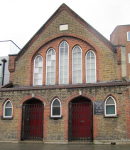 Having
met for some years in St Philip's Hall, Newark Street, in 1922 the
congregation
embarked on the creation of a new chapel in Varden Street [right],
with inaugural services held in the Central Hall, Philpot Street (the
base of the Mildmay Mission) - Popham again preaching (for his
biography, see J.H. Gosden Valiant
for Truth). This
chapel is now one of the
three English congregations of
the Free
Presbyterian Church of Scotland (website closed on the Sabbath).
Having
met for some years in St Philip's Hall, Newark Street, in 1922 the
congregation
embarked on the creation of a new chapel in Varden Street [right],
with inaugural services held in the Central Hall, Philpot Street (the
base of the Mildmay Mission) - Popham again preaching (for his
biography, see J.H. Gosden Valiant
for Truth). This
chapel is now one of the
three English congregations of
the Free
Presbyterian Church of Scotland (website closed on the Sabbath).
 For
a time, to the east of St George's there was a small chapel known as
Rehoboth (Genesis 26.22, a well dug by Isaac and a symbol of
flourishing) - left on an
1862 map (the brown line marks the parish boundary with St Paul
Shadwell). It opened, and was licensed for marriages, in 1841; Bo'sun Smith,
the Baptist involved in so many local initiatives in those years,
claimed to have laid the foundation stone. It is mentioned in 'An Opium
Smoker in Tiger Bay', in James Greenwood's In Strange Company
(1874), giving directions to an opium den: you may go another way, down Cable Street,
till you arrive at a not particular inviting-looking thoroughfare, on a
corner of which is inscribed 'To Rehoboth Chapel.' From the end of this
street you make out a dingy-looking little public house, called the
'Coal Whipper's Arms'. The opium master's house is just handy - up a
court.
For
a time, to the east of St George's there was a small chapel known as
Rehoboth (Genesis 26.22, a well dug by Isaac and a symbol of
flourishing) - left on an
1862 map (the brown line marks the parish boundary with St Paul
Shadwell). It opened, and was licensed for marriages, in 1841; Bo'sun Smith,
the Baptist involved in so many local initiatives in those years,
claimed to have laid the foundation stone. It is mentioned in 'An Opium
Smoker in Tiger Bay', in James Greenwood's In Strange Company
(1874), giving directions to an opium den: you may go another way, down Cable Street,
till you arrive at a not particular inviting-looking thoroughfare, on a
corner of which is inscribed 'To Rehoboth Chapel.' From the end of this
street you make out a dingy-looking little public house, called the
'Coal Whipper's Arms'. The opium master's house is just handy - up a
court. 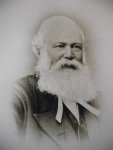 Its minister in the 1860s was Samuel Cozens [right in
1880s - we're grateful to his
great-great-grandson, Professor John
Spencer, for this image, and for a contemporary reprint of his 1862
autobiography A
Christmas Box, which
includes a full bibliography of his writings]. In 1852, when
pastor of Little London,
Willenhall in Staffordshire, he preached and printed a sermon The Divine Decrees Consistent with Reason
and Revelation which prompted a scathing response from a
Primitive Methodist, Philip Pugh, under the snappy title Arminianism
v. Hyper-Calvinism
- Three Letters entitled
'Strictures', 'The Weights & Scales of the
Rev. Samuel Cozens, Examined and Found False, and not Bearing the
Government Stamp, are Rejected' and 'The Re-Adjustment of the Adjuster,
or, the Doctrines of Unrestricted Grace, Free Will, and Christian
Holiness, Vindicated against the Restrictions, Fatality, and
Antinomianism of the Rev Samuel Cozens'. The Primitive
Methodist
journal Christian
Ambassador commented
Its minister in the 1860s was Samuel Cozens [right in
1880s - we're grateful to his
great-great-grandson, Professor John
Spencer, for this image, and for a contemporary reprint of his 1862
autobiography A
Christmas Box, which
includes a full bibliography of his writings]. In 1852, when
pastor of Little London,
Willenhall in Staffordshire, he preached and printed a sermon The Divine Decrees Consistent with Reason
and Revelation which prompted a scathing response from a
Primitive Methodist, Philip Pugh, under the snappy title Arminianism
v. Hyper-Calvinism
- Three Letters entitled
'Strictures', 'The Weights & Scales of the
Rev. Samuel Cozens, Examined and Found False, and not Bearing the
Government Stamp, are Rejected' and 'The Re-Adjustment of the Adjuster,
or, the Doctrines of Unrestricted Grace, Free Will, and Christian
Holiness, Vindicated against the Restrictions, Fatality, and
Antinomianism of the Rev Samuel Cozens'. The Primitive
Methodist
journal Christian
Ambassador commented | In
reading this book we have been led to regret that, to use a somewhat
vulgar saying, the author should have spent so much powder and shot
over such small game. 'The Rev. Samuel Cozens, Baptist Minister',
appears to be one of those small men who can only force themselves to
the surface of society, and secure public attention, by their powers of
mischief and who, for the sake of notoriety rather than with malicious
intention, are ever and anon producing commotion and trouble by the
exercise of tneir mischievous powers. Mr. Pugh, with the good sense he
is known to possess, would probably have treated this little man with
the contempt of silence, had it not appeared that, by his
hyper-Calvinistic extravagances, proclaimed from the pulpit and the
press, many of Mr Pugh's simple but honest people were likely to become
unsettled in their religious views ... |
| The
writhings of the enemy indicate that he has been wounded with the wound
of a terrible one. Come, then, and help me to bring the ark of truth once more against
the Dagon of error—to strike another
blow at that idolatrous god Baal—FREE
WILL-—ARMINIANISM,—which
the Arminians set up against
Christ, and which the mongrel, half-way Calvinists set up with Christ. Let us down
with Baal and up with Christ, the sinner's only hope and Saviour; and
while pious infidels are singing Wesley's Hymn—"I
have a soul to save", may we sing the song of Moses—"The
LORD is my salvation". This is the prayer of yours in the truth, S. COZENS. 13, Lincoln-street, Bow-road,
London, E., February 12,1863. I shall be glad to receive your name for as many copies as you feel inclined to subscribe for, The second edition (third thousand) is in the press. P.O. Orders payable at Bow-road Office. |
GENERAL
BAPTISTS - ARMINIANS
General Baptists, Tower Hill /
Goodman's Fields / Virginia Street / Mill Yard / Commercial Road
The General (or 'Six Principle') Baptists of Beulah Chapel,
Commercial Road also had a long history. Based initially at TOWER HILL
(according to some accounts, East Smithfield - some specifying Looking
Glass Alley), but meeting in private houses, fifty members had
suffered four months in the New Prison (paying £3 a week for two rooms
and permission to have their own beds, and only released on payment of
a further fine. Samuel Loveday
(who had signed the 1660 Confession of Faith) was the minister until
his death in 1684/5, and was succeeded in 1686 by John Maulden (or
Malden), who was also imprisoned the following year, and his goods
seized to meet the fine of £20 a month for non-attendance at Anglican
worship. In 1689 they built a new chapel in Goodman's Fields - in
Rupert Street or Lambert Street (which were adjacent). Maulden served them for 26 years with diligence and success until
be became a Sabbatarian
in 1710, joining the Mill Yard congregation as joint pastor with Savage
(but died four years later, aged 70). His three publications were The Pious Young Man's Guide
(a father/son catechism), A
Threefold Dialogue (on the three key issues of the day for
dissenters: free grace, baptism, and the sabbath) and Imperfections Discovered
- a lament for the lack of real and vital religion. Ivimey
reported that Paul's Alley chapel determined in 1707 that baptism
should henceforth be administered at the Rupert Street chapel, and that
a Mr Congrove succeeded Maulden, adding they differed from other churches
respecting the Lord's Supper, but in what particular does not appear.
In
1712, with Lewis Douglas as
minister, they moved (why is not clear) to VIRGINIA STREET,
Wapping, where a church - probably also of General Baptists -
previously led by
Isaac Lamb (shoemaker of Pennington Street, who died in 1691) had
dissolved
and transferred to Paul's Alley, Barbican. (Joseph Burroughs, son of
the
deacon of this congregation, became pastor there for 44 years.) Titus Oates had
been a member of Lamb's congregation for a time.
An
8-page pamphlet of 1674 published by 'D. Brown' may refer to a member
of this congregation:
| A warning-piece for rash swearers and drunkards being a full and true account of one William Swallow a carpenter, living in Penitent-Street, near Ratcliff-High-Way, wishing the Devil might make him an example by crushing his bones to pieces, if ever he lay with one Mary Bacon, a bad woman, with whom he kept company: he breaking his vow, the Devil according to his wish, came last Monday night and shattered him to pieces, where he lay in Penitent-Street, as a dreadful spectacle to behold: also, you have here an account of one William Pargeter, a seaman, on board of one of our men of war at sea, who was given to such excessive drinking, that he lately drank himself diligently to death ... |
Lewis
Douglas departed after a few years: his
conduct soon became awfully inconsistent with his profession; and after
much trouble and disgrace, he was excluded from the communion of the
church, Aug 7 1720.
For some time previously, he had forsaken
his station and wandered about the country. So the search was on for a
new pastor (meanwhile, John Maulden's son was an active lay minister);
a
day of prayer and fasting was held. John How was approached, but he
disagreed on maintaining the laying on of hands; Joseph Morris of
Welton, Northants, declined; but Matthew
Randall, an elder in Chichester whose business often brought him
to London and whose labours were
acceptable was
eventually appointed in 1722. Controversially, he introduced
congregational singing - initially only once in each service (but
extended in 1729 to a post-sermon slot). The Particular Baptists had
started a fund for the training and maintenance of preachers, and the
Virginia Street congregation - together with Paul's Alley - did the
same, on more liberal principles, in 1726.
In
1741 their lease expired,
so they moved to MILL YARD, renting the premises of the Seventh Day Baptists
for £10 a year. (It seems that the Roman Catholics
took over the Virgina/Penitent Street site by the 1760s, until the
building of St Mary & St Michael on the Commercial Road: although a
short section of Virginia Street remains, there is no trace of Penitent
Street.) Randall continued until his death in 1756 (after 50 years of
ministry) - he appears to have been
unhappy in his domestic connections; and
suffered much, during the first years of his residence in London, from
the tongue of calumny. But his stead and honourable conduct stopped the
mouth of gainsayers, and procured him, as he advanced in life,
increasing respect and friendship. On
his death, John Brittain
(who
had 'supplied' from the Horsleydown
chapel) was appointed minister. He was an uneducated tradesman (one
anedcote tells how, returning from hearing Whitfield preach a sermon
including the words Some people are as ignorant of religion as they are of algebra, he asked his walking companion Aye; what language is algebra?)
He had 'itinerated' around south London before his ordination, building
up a large congregation, and setting up two lectureships. There was
division over his appointment, but he proved very popular. The
congregation wanted their own
church, and opened a subscription in 1760, eventually opening a
'commodious' chapel in CHURCH LANE, Whitechapel in 1763.
But
the General Baptist cause, in London and elsewhere, was in decline; by
1784 membership of the
chapel had halved to 150, and John Brittain was seventy-four years old.
The congregation wrote
to their friends in Halifax
| Although this metropolis is estimated to contain about a million of inhabitants; yet, in the five churches of our denomination, we should find it very hard to make out three hundred members. Out of these five churches there is but ours, and one nearly extinct, that hold the fundamental doctrines of the gospel respecting the divinity and atonement of our blessed Saviour. So that we are left as 'a sparrow upon the house top'. And we are sorry to add, that we are far from flourishing: the addition of new members scarcely keeping pace with the decease of our old ones. |
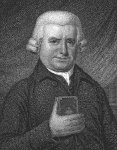 Brittain generously asked for an assistant to be
appointed, for whom he would forego £100 of his stipend. Dan Taylor
[right, aged 71] had recently become
minister at Halifax, having served nearby at Wadsworth. A miner's son
(born locally at the curiously-named Sour Milk Farm,
Northowram), he was raised as an Anglican, became a Methodist in 1757,
and then (disagreeing on the issue of infant baptism)
a General Baptist - journeying 120 miles on foot, it is said, to be
(re-)baptized at Boston in Lincolnshire in 1763 since the Particular
Baptists would not receive him because of his Arminian convictions' He
settled for a time in the East Midlands, working as a
schoolmaster. In 1770, critical of their spiritual laxity and
doctrine of Christ, he founded the New
Connexion
- a more evangelical
body, which also stressed the value of 'connexionalism' (presumably
learnt
from the Methodists), though he
continued in fellowship with the 'Old' Baptists, for a time as a
representative
from Leicestershire, until he finally withdrew from them in 1803. The
New Connexion's heartland was the industrial Midlands (with around 70
chapels by the time of Taylor's death: see here
for his influence on the congregation at Crich, in Derbyshire.)
Brittain generously asked for an assistant to be
appointed, for whom he would forego £100 of his stipend. Dan Taylor
[right, aged 71] had recently become
minister at Halifax, having served nearby at Wadsworth. A miner's son
(born locally at the curiously-named Sour Milk Farm,
Northowram), he was raised as an Anglican, became a Methodist in 1757,
and then (disagreeing on the issue of infant baptism)
a General Baptist - journeying 120 miles on foot, it is said, to be
(re-)baptized at Boston in Lincolnshire in 1763 since the Particular
Baptists would not receive him because of his Arminian convictions' He
settled for a time in the East Midlands, working as a
schoolmaster. In 1770, critical of their spiritual laxity and
doctrine of Christ, he founded the New
Connexion
- a more evangelical
body, which also stressed the value of 'connexionalism' (presumably
learnt
from the Methodists), though he
continued in fellowship with the 'Old' Baptists, for a time as a
representative
from Leicestershire, until he finally withdrew from them in 1803. The
New Connexion's heartland was the industrial Midlands (with around 70
chapels by the time of Taylor's death: see here
for his influence on the congregation at Crich, in Derbyshire.)
Taylor's
name was mooted as Brittain's assistant. The
Connexion discussed the principle of this proposal, which some felt set
a bad precedent in terms of clerical mobility. Friends felt it unfair
to
uproot the family (with a farm, and nine children) for a reduced
and uncertain stipend. But others felt it important to have an able
minister in London. In the event, Dan Taylor became joint pastor with
John Brittain for 11 years, then sole pastor for the next 22. The
church was
received into his New Connexion in 1786 (they had been in
correspondence since its foundation).
Taylor
was energetic, pioneering new churches, societies, and Sunday Schools.
He was one of the founders, and for 15 years titular principal, of the General Baptist Academy
for training ministers. In his time, it remained a small enterprise -
between 1798 and 1820 only 22 candidates were trained (three or four a
year). It started in Mile End, then Stoke Newington, before moving
to Wisbech in Cambridgeshire in 1813, to Spa Fields, Leicester in 1843
and to Nottingham (via Chilwell, on its outskirts) in 1882 as the
'Midland Baptist College', becoming linked to the new university
college there. [It closed around the time of World War I and its assets
were transferred to Rawdon Baptist College - later the Northern Baptist
College, which continued the radical Baptist tradition and is now part
of the ecumenical Luther
King House in south Manchester]. Taylor was the first editor of the
General Baptist Magazine,
and his published works were Fundamentals of Religion in
Faith & Practice (1775), A Humble Essay
on Christian Baptism (1776), The Reality and Efficacy of
Divine Grace (1787), An
Antidote against Deism and The Christian Religion: its
Leading Princples,
Practical Requirements and Experimental [=experiential]
Enjoyments (these last two published postumously, in 1819
and 1844). See this memoir
by his son Adam (1820).
But
during Taylor's time at Church Lane there
was much discord, with 31 members seceding in 1811 (their new church in
Artillery Street failed in 1814; some returned, others went to Great
Suffolk Street). Taylor's death in 1816, aged 78 - suddenly: while reading after tea, he fell
back in his chair, and immediately expired
-
had the effect of ending the worst of the discord.

 In 1817 the church
had 137 members. In 1821 they moved again, to their final home, in
COMMERCIAL ROAD ('between 2 and 3
Devonshire-place' - i.e. between Hungerford and Planet [for a time
Star] Streets - maps 1872 & 1899 right - taking the name Beulah Chapel
(Isaiah 62.4: No longer will they
call you Deserted, or name your land Desolate. But you will be called
Hephzibah, and your land Beulah; for the LORD will take delight in you,
and your land will be married - Beulah was used as a
metaphorical name for faithful Israel). The minister from 1820 for the
next twenty years or so was Joseph
Wallis
(1797-1857), who continued the link with the training college, becoming
the tutor at Leicester (having in 1842 graduated in chemistry from
London University, sponsored by Bristol Baptist College). In 1848 there
were nine ministerial students. In 1855 he and his fellow-examiners
appealed for improvements to the library: in that year a student wrote
to the General Baptist
Repository, at Wallis' request:
In 1817 the church
had 137 members. In 1821 they moved again, to their final home, in
COMMERCIAL ROAD ('between 2 and 3
Devonshire-place' - i.e. between Hungerford and Planet [for a time
Star] Streets - maps 1872 & 1899 right - taking the name Beulah Chapel
(Isaiah 62.4: No longer will they
call you Deserted, or name your land Desolate. But you will be called
Hephzibah, and your land Beulah; for the LORD will take delight in you,
and your land will be married - Beulah was used as a
metaphorical name for faithful Israel). The minister from 1820 for the
next twenty years or so was Joseph
Wallis
(1797-1857), who continued the link with the training college, becoming
the tutor at Leicester (having in 1842 graduated in chemistry from
London University, sponsored by Bristol Baptist College). In 1848 there
were nine ministerial students. In 1855 he and his fellow-examiners
appealed for improvements to the library: in that year a student wrote
to the General Baptist
Repository, at Wallis' request:
| ... I regard the
library as
a disgrace, and to publish our own disgrace
is not at any
time a desirable thing ... There are in the Library
about 1100 volumes, of which not more than 360 at most are of any use
to us, the
remaining 750 so far as we are concerned might as well be at the bottom
of sea, being old books upon general subjects in which it is not safe
to
trust information ... |
George Ward Pegg (who was from Melbourne in Derbyshire, and trained at the General Baptist College in Leicester) was the minister from 1845 until his early death in 1860 at the age of 39 - his comparatively early departure, though doubtless gain to him, is felt to be a great loss by many. In his first year, a major Sunday School event was held, with various clergy speakers - a very interesting and encouraging meeting ... looked upon as an earnest of better days for the Beluah chapel cause. (Children presented the Rev T.H. Hudson with a handsome portable commentary and a quantity of Chinese tracts.) The following year, Edward Young, member for 43 years and deacon for 20 years, died. Pegg lived at 15 Prince's Street, Stepney, and was responsible for making extensive improvements to the chapel, for which tenders were invited in 1851.This obituary is fascinating: while it recognises the frailty of his health - his constitution was never strong, and the care which he took of it proved insufficient to preserve it from premature decay - it declares that his 'usefulness' (very much a term of the times!) would have been greater if he had been more outgoing, and if he had been more assertive in paying off the chapel's debts (paraphrasing Luke 16.3 - too delicate to dig, too bashful to beg), and had spent more of his income on this rather than on entertaining visiting missionaries. The writer is also scathing about how ordination services had become trivialised. Pegg's funeral oration, delivered by the Rev Isaac Preston, was deemed pathetic - in the traditional rather than the modern sense! (McGill's 1861 model census said that the chapel seated 600, and estimated that there were 150 in the Sunday School.)
Pegg's successor,
from 1861-68, was Thomas Goadby,
son of a Midlands minister (who was closely involved with the college in Leicester),
born in 1829, who studied there and then at
Glasgow University before his first appointment to Coventry in 1856.
After five years at Derby (where he wrote The Christian Ministry of the
Future),
from 1873 until his death in 1889 he became principal of the college.
He was a scholarly man, described as of
high character and exceptional ability; in 1884 he translated
the orientalist Heinrich Ewald's Revelation:
Its Nature and Record from the German.
The next minister was Joseph Fletcher,
who lived nearby at 322 Commercial Road. Before ordination, living at
Lordship Lodge, Tottenham, he had been treasurer of the Baptist
Theological Education Society. The 1886 religious census lists attendance
as 320 (morning) and 376 (evening). In that year he published a sermon The Prophetic Vision of the
Exalted Christ
and was one of the editors of the denomination's magazine. In 1889, as
President of the General Baptist Association for the year, he spoke out
at their meetings in Walsall against plans for national amalgamation
with the Particular Baptists, citing disagreements about foreign
mission as his main reason, but also difficulties in merging their
training colleges. He was happy to be a full member of the London
Baptist Association, and the Baptist Union Council, and to work with
those of other traditions in East London, but believed that a spiritual
rather than a paper union was what mattered. The story of these
complex issues is traced here.
In the latter years of the 19th century, morning worship was at 10.45am, evening worship at 6.30pm (Lord's Supper on the 1st Sunday of the month) with Monday and Thursday prayer meetings; seats to be had of the deacons. Charles Booth, writing in 1902, noted that their congregation consists of serious-minded lower-middle and working-class people, drawn from the streets near and from further East as far as Bow. They nearly fill their church, which seats six hundred people, and a hearty friendliness prevails. Their Sunday school consists of their own and other well-dressed children. The poorer ones do not care to mix with such as these, so the children sort themselves, the poor going to the Ebenezer or some mission school. But in 1905, because the area had become predominantly Jewish, proposals were made to merge with a church in Seven Kings, Ilford, with Joseph Fletcher as its minister (John Chadwick, the minister at Ilford, who for some time had drawn no salary, retiring); there were 167 members, and when a new church was opened in 1913 tthe former church became the Sunday School. The following year 59 members withdrew to found another church at Goodmayes. Today the Seven Kings church is a united URC/Baptist congregation.
Seventh Day General
Baptists, Mill Yard
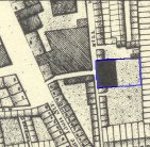 Most intriguing
were the Seventh Day General
Baptists of Mill Yard [off the south-east end of Leman Street,
Goodman's Fields - map right].
This was
the
main centre of Seventh Day (Saturday) worship - which had a long and
varied history in this country, quite distinct from Seventh Day
Adventism which started in the USA with William Miller in the 1840s,
coming to Britain in the 1870s, and which has other distinctive
doctrines (though as shown below, there were connections with American
Seventh Day Baptists from this period - see George Benjamin Utter Manual
of the Seventh-Day Baptists
(1858) - he visited Mill Yard in 1843). There were other somewhat
similar groups for a time, such as 'Tunkers', 'Keithians' and 'Quaker
Baptists'.
Most intriguing
were the Seventh Day General
Baptists of Mill Yard [off the south-east end of Leman Street,
Goodman's Fields - map right].
This was
the
main centre of Seventh Day (Saturday) worship - which had a long and
varied history in this country, quite distinct from Seventh Day
Adventism which started in the USA with William Miller in the 1840s,
coming to Britain in the 1870s, and which has other distinctive
doctrines (though as shown below, there were connections with American
Seventh Day Baptists from this period - see George Benjamin Utter Manual
of the Seventh-Day Baptists
(1858) - he visited Mill Yard in 1843). There were other somewhat
similar groups for a time, such as 'Tunkers', 'Keithians' and 'Quaker
Baptists'.
Records were lost in the fire
of 1790 - the 'Old Church Book'
(1673-1840, after which the 'New Church Book' begins) refers to these -
so the early history is speculative in places. In 1754 they styled
themselves 'The
Congregation of
Protestants dissenting from the Church of England, commonly called the
Seventh-day Baptists'. They had no written articles of faith, but based
their teaching on the Ten Commandments ('remember the sabbath day and
keep it holy'), which they set up in their church in 1698, in 1704
adding Matthew 5.19 (Jesus came not to abolish but to fulfil the law),
and Revelation 12.17 and 14.12 (the dragon fighting against those who
keep the commandments of God and hold the testominoy of Jesus, and the
Son of Man with a sickle in his hand).
Keeping the seventh day (rather than the first, the 'day of
resurrection') as the principal day of worship was a radical move, as
it linked to Jewish teaching about rest on the seventh day, rest for
the land on the seventh year, and most significantly release from debt
in the year of jubilee (7x7). Since
their main act of worship was on Saturdays, they were able to rent out
their building to various Sunday congregations - marked below in brown.

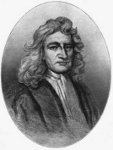 One
claim is that the congregation originated with John Trask,
who came to London from Salisbury in 1617, held revival meetings and
ministered to a congregation for a couple of years. More definite
origins come from an unlikely pair of 'Saturday men' (the
pattern of co-pastors was maintained until 1879): John
James, a
Fifth Monarchy Man who was their pastor until 1661 when he was hung,
drawn and quartered on the
basis of trumped-up charges, at Bull Stake Alley Whitechapel [left: the white cross marks the
entrance to the
alley], where the congregation was then meeting, having met 'near
Whitechapel' until 1654; and Dr Peter
Chamberlen (1601-83) - the third in a line of distinguished
surgeons of that name: a Huguenot family, who developed the obstetric
use of forceps. 'Peter the Third' [right]
was pastor from 1653,
as well as being a noted physician (attending the birth of King Charles
II), and advocate of public health and proper midwifery.
One
claim is that the congregation originated with John Trask,
who came to London from Salisbury in 1617, held revival meetings and
ministered to a congregation for a couple of years. More definite
origins come from an unlikely pair of 'Saturday men' (the
pattern of co-pastors was maintained until 1879): John
James, a
Fifth Monarchy Man who was their pastor until 1661 when he was hung,
drawn and quartered on the
basis of trumped-up charges, at Bull Stake Alley Whitechapel [left: the white cross marks the
entrance to the
alley], where the congregation was then meeting, having met 'near
Whitechapel' until 1654; and Dr Peter
Chamberlen (1601-83) - the third in a line of distinguished
surgeons of that name: a Huguenot family, who developed the obstetric
use of forceps. 'Peter the Third' [right]
was pastor from 1653,
as well as being a noted physician (attending the birth of King Charles
II), and advocate of public health and proper midwifery.
The
moved to East Smithfield in 1673 (when there were seventy members, with
seventy nine in 1681). In 1691, through the benefaction
of Joseph Davis senior and others, they acquired a permanent meeting
house
(seating 250 - a gallery was added), together with a burial ground,
three
cottages, almshouse and parsonage, at Mill Yard [chapel shown below
c1883]. In 1700 Davis set up a trust for the
eight Seventh-Day Baptist churches then existing; he died in 1706, and
when his son Joseph (who paid an annual 'rent charge' to all the
churches)
died childless in 1731 the whole estate was vested in the
trustees, which continued to finance the cause.
From 1705-38 or so, a Presbyterian/Independent congregation met here on Sundays, described here.
From 1741-63 the General Baptists described above met here on Sundays, until they acquired their own premises.
William Sellers (or Saller) was a pastor from 1657 or
1670 to 1678. He wrote An
Examination of the Late Book Published by Dr
Owen, Concerning a Sacred Day of Rest (1671) in reply to Owen's
Exercitations Concerning
the Name, Original, Nature, Use and
Continuance of a Day of Sacred Rest (1671). He described Owen as
so Learned a Scribe,
but accused him of dishonouring Christianty. He was followed by Henry
Soursby (from 1683-1711), who with Mehetabel Smith, a member of
the
congregation, wrote A
Discourse of the Sabbath, Or the Controversies about the Sabbath Stated
and Examined, with
Reference to the Law of Nature, the Law of Moses, and the Law of Christ
(1683). In
1682 he acquired land, for the large sum of £1270, as trustee for Peter
Chamberlen and his wife Ann and son Hope, paying them £40 a year while
they lives, with the rest of the profits to Hope and his heirs. Some
years later Ann and Hope borrowed £600, backed by a 500-year mortgage
on the land, and Soursby's title was challenged in the courts in 1714.
Around this time John
Bunyan
had some contact with two other Saturday Baptist congregations,
particularly that of the erudite Francis Bampfield, who died in Newgate
gaol in 1684 - see Richard Greaves Glimpses of Glory: John Bunyan
& English Dissent (Stanford UP 2002).
John Savage followed, until 1720 - it was in his time that the move to Mill Yard took place; he died in 1726. (His grandson Samuel Morton Savage was a tutor at the Congregational Academy in Wellclose Square, 1744-62.) For a few years (1710 until his death in 1714) John Maulden, who had been minister of the General Baptists in Goodman's Fields until he became a Sabbatarian, was joint pastor. From 1721-27 a newly-formed Particular (Calvinist) Baptist group joined them on Saturdays, but doctrinal splits soon followed.
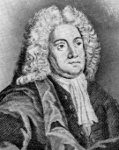
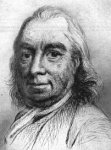 In
1726 Robert Cornthwaite became
their pastor, at the age
of 30, remaining until his sudden death in 1755. He was from Bolton,
where on the early death of his father he had established a school for
their large family. Said to be of changeable
temperament but resolute in defending his
principles, he was a keen
controversialist. He seceded from the established church to become a
Presbyterian, and then a Baptist; a discouraging twelve month pastorate
in Boston, Lincolnshire might have tempted him back into the Anglican
church, but instead he came to London and was attracted to
Sabbatarianism, which he defended in many writings (taking on Samuel
Wright and Caleb Fleming). The chapel reached the height of its
prosperity in
Cornthwaite's time: in 1763 there were 87 members (the largest it ever
attained)
and the society was in an nourishing
condition, wrote one commentator; it was well-filled, many persons of quality being members,
coming in fine equipages, with
liveried servants and footmen (who sat in the gallery). The
members included Nathan(iel)
Bailey [left] whose Universal Etymological
Dictionary
went through thirty editions between 1721 and 1802, and Sir William
Tempest [right], a barrister,
poet and
Fellow of the Royal Society. Cornthwaite also
knew William
Whiston, Cambridge mathematician, Arian, and translator of
Josephus. Anne Arbuthnot said, in 1744,
that any tour of London should include the seventh-day men, and
sweet-singers of Israel at Goodman's Fields. In 1750 Cornthwaite
was the annual preacher for the Widows' Fund of the 'three denominations'.
In
1726 Robert Cornthwaite became
their pastor, at the age
of 30, remaining until his sudden death in 1755. He was from Bolton,
where on the early death of his father he had established a school for
their large family. Said to be of changeable
temperament but resolute in defending his
principles, he was a keen
controversialist. He seceded from the established church to become a
Presbyterian, and then a Baptist; a discouraging twelve month pastorate
in Boston, Lincolnshire might have tempted him back into the Anglican
church, but instead he came to London and was attracted to
Sabbatarianism, which he defended in many writings (taking on Samuel
Wright and Caleb Fleming). The chapel reached the height of its
prosperity in
Cornthwaite's time: in 1763 there were 87 members (the largest it ever
attained)
and the society was in an nourishing
condition, wrote one commentator; it was well-filled, many persons of quality being members,
coming in fine equipages, with
liveried servants and footmen (who sat in the gallery). The
members included Nathan(iel)
Bailey [left] whose Universal Etymological
Dictionary
went through thirty editions between 1721 and 1802, and Sir William
Tempest [right], a barrister,
poet and
Fellow of the Royal Society. Cornthwaite also
knew William
Whiston, Cambridge mathematician, Arian, and translator of
Josephus. Anne Arbuthnot said, in 1744,
that any tour of London should include the seventh-day men, and
sweet-singers of Israel at Goodman's Fields. In 1750 Cornthwaite
was the annual preacher for the Widows' Fund of the 'three denominations'.
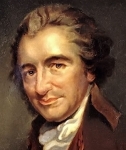 Daniel
Noble
(1729-1783) was joint pastor, from 1752 to 1783 - he preached at
Cornthwaite's funeral (Protestant
Dissenters' Magazine vol.6). Born in Whitechapel in 1729, and
intended by his parents for nonconformist ministry, he studied with a
local tutor and then (guided by Cornthwaite) in Kendal, and in the
Presbyterian tradition at Glasgow University. He also remained an elder
at a 'First-Day' Baptist
church in the Barbican, and also held a Church of England advowson (the
right to
present to a living)! He established a school in Peckham, and as well
as theology wrote on literature (having published a 'Letter to the
People of England' on the Young Pretender in 1745), founding a
periodical The
Library, which survived only thirteen issues. For
a few years
he employed Thomas
Paine [right] to teach at his 'great
Academy' in Leman Street, at a salary of £20 a year plus £5 for finding
his own lodging. Paine's biographer George Chalmers says Here he
continued, teaching English, and walking out with the children, till
Christmas 1766, disliked by the mistress ... and hated by the boys, who
were terrified by his harshness. Mr Noble relinquished [him] without
much regret. Noble himself, though able and learned, was
somewhat eccentric; for example, he named his daughters Experience,
Eusebia and Serena.
Daniel
Noble
(1729-1783) was joint pastor, from 1752 to 1783 - he preached at
Cornthwaite's funeral (Protestant
Dissenters' Magazine vol.6). Born in Whitechapel in 1729, and
intended by his parents for nonconformist ministry, he studied with a
local tutor and then (guided by Cornthwaite) in Kendal, and in the
Presbyterian tradition at Glasgow University. He also remained an elder
at a 'First-Day' Baptist
church in the Barbican, and also held a Church of England advowson (the
right to
present to a living)! He established a school in Peckham, and as well
as theology wrote on literature (having published a 'Letter to the
People of England' on the Young Pretender in 1745), founding a
periodical The
Library, which survived only thirteen issues. For
a few years
he employed Thomas
Paine [right] to teach at his 'great
Academy' in Leman Street, at a salary of £20 a year plus £5 for finding
his own lodging. Paine's biographer George Chalmers says Here he
continued, teaching English, and walking out with the children, till
Christmas 1766, disliked by the mistress ... and hated by the boys, who
were terrified by his harshness. Mr Noble relinquished [him] without
much regret. Noble himself, though able and learned, was
somewhat eccentric; for example, he named his daughters Experience,
Eusebia and Serena.
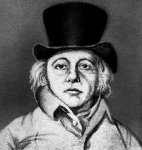 Peter Russell was co-pastor
from 1755-89, and William Slater
[left]
from 1784 until his death in 1819; he and John Joseph were the only
trustees for some years. There was a fire
in 1790, necessitating a
rebuild. The congregation went into decline, with no pastor for 21
years, and closed in 1819. Ten years earlier Joseph Slater junior, out of malice against his uncle, William
Slater, and out of opposition to the religious principles of the
congregation, filed
information against him in the High Court; he became an Anglican, but
remained a trustee, co-opting friends as fellow-trustees: henceforth
the property and funds
remained 'in Chancery'.
Peter Russell was co-pastor
from 1755-89, and William Slater
[left]
from 1784 until his death in 1819; he and John Joseph were the only
trustees for some years. There was a fire
in 1790, necessitating a
rebuild. The congregation went into decline, with no pastor for 21
years, and closed in 1819. Ten years earlier Joseph Slater junior, out of malice against his uncle, William
Slater, and out of opposition to the religious principles of the
congregation, filed
information against him in the High Court; he became an Anglican, but
remained a trustee, co-opting friends as fellow-trustees: henceforth
the property and funds
remained 'in Chancery'.
In
this period a small society of
Particular Baptists also
met here on Sundays. One Scott was the minister in 1772, followed shortly by John Matlock D.D. From Daventry, this was his third congregation. Said by one commentator (with what reason?) to be not a very honourable character, in
1780, at the time of the Gordon Riots, he and his elders and deacons (apparently meeting at that time in
Cannon Street Road) signed the Protestant Association's petition
calling for the repeal of the 1778 Papists Act, which had lifted some of the penalties on Roman Catholics (the setting for Dicken's Barnaby Rudge). Matlock then went to America, where he died in 1787, aged 57. His
tombstone, in the Presbyterian churchyard in New York, read Beloved of God, he lov'd that name, / On
Britain's isle long did proclaim /That Christ is God, the sinner's
friend; / He boldly preached to his end. / His life in tribulation's
road he trod, / but now he reigns with Christ, his God. Thomas Thomas followed him in 1787. Born in 1759, son of Timothy Thomas, Baptist minister of Aberduar in Carmarthenshire (who, combining literary gifts with a consummate doctrinal precision,
died there at the age of 47), and twin brother of John and Timothy
(both ministers - Timothy succeeded their father), he trained under
Hugh and Caleb Evans at the Bristol Academy. Ordained to a post
in Pershore, he left after seven years because of an intractible
dispute between two families and came to the Mill Yard chapel. After
the fire of 1790, they met at the Goodman's Fields chapel until 1799,
courtesy of Abraham Booth
(to whom Thomas ever remained grateful), but the congregation waned, and
ceased to meet when Thomas (who had established a school in Mile End)
removed to Peckham, spending the rest of his days without ministerial charge; his death is effusively described by the Baptist Magazine of January 1820. He published two sermons: The Mystery of the seven stars as emblematical of the Ministers of the Gospel, explained and improved (preached to the Baptist Monthly Association at Goodman's Fields in 1809, and Jesus Christ the Object of Prayer,
preached in Southwark a few weeks before his death. At his funeral, the
pall was carried by a Presbyterian, an Independent and four Baptists;
he was buried at Bunhill Fields.
'First Day' services resumed at the rebuilt chapel under Independent
leadership in 1805.
In
1826 'First Day' Baptists began to lead worship, including William Shenstone. However,
Slater's son-in-law William
Henry Black became
an afternoon preacher in 1840, at which time there were just five
members -
himself, and Harriet (his third wife), Ann, Charlotte and Sophia
Slater;
he moved onto the site in 1844. He had rejected the Hutchinsonian
biblicism of his native Aberdeen, and became a
member of several learned societies. Having catalogued manuscripts at
the Ashmolean Museum he was given a post at the British Museum, and in
1841 at the Public Record Office. He challenged the Anglican trustees
at his own expense - the matter was not resolved until 1869 (shades of
Charles Dickens' Bleak House!)
and even then property remained in Chancery. By then, it is said that
the congregation
had fallen to
one man and three women (two of them his daughters), with never more
than twenty members during his time.
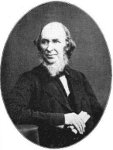 But
Black [right] was
sufficiently well-known to be sought out and interviewed by C.M. Davies
(who served briefly in this parish). Once
he had found the unlikely-looking,
unsavoury place he was
much-impressed by this venerable
scholar-like old man, arrayed in
clerical black, with a long white beard....I expected to find some
illiterate scholar, with a hobby ridden to death, when lo! I found
myself in the presence of a profound scholar and most courteous
gentleman, who informed me that he thought in Latin, said his prayers
in Hebrew, and read his New Testament lessons from the original
Greek! ... In the service he prayed for all 'honest and sincere persons
of whatever nation or profession: for Jews and Mahomedans [sic]
and
Christians: and that all may be fitted for nobler and purer state of
society, and have their share in the First Resurrection'. The
congregation was small, but it
would be no harm if some of our Sunday
preachers would take a quiet run out on Saturday to Goodman's Fields
to see him at work.
But
Black [right] was
sufficiently well-known to be sought out and interviewed by C.M. Davies
(who served briefly in this parish). Once
he had found the unlikely-looking,
unsavoury place he was
much-impressed by this venerable
scholar-like old man, arrayed in
clerical black, with a long white beard....I expected to find some
illiterate scholar, with a hobby ridden to death, when lo! I found
myself in the presence of a profound scholar and most courteous
gentleman, who informed me that he thought in Latin, said his prayers
in Hebrew, and read his New Testament lessons from the original
Greek! ... In the service he prayed for all 'honest and sincere persons
of whatever nation or profession: for Jews and Mahomedans [sic]
and
Christians: and that all may be fitted for nobler and purer state of
society, and have their share in the First Resurrection'. The
congregation was small, but it
would be no harm if some of our Sunday
preachers would take a quiet run out on Saturday to Goodman's Fields
to see him at work.
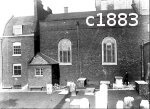 Black's American son-in-law William Mead Jones D.D. succeeded him;
but they only kept going by
means of a charity compensating old people for loss of Sabbath wages.
In 1885 the London, Tilbury and
Southend Railway
sought the Mill Yard site for their new terminus, and negotiated
directly with the Chancery lawyers, paying in £5,500 to be passed to
the rightful owner. The trustees - the majority now First-Day Baptists
because of the shortage of male members - claimed this sum, arguing
that the Seventh-Day cause was defunct; after much wrangling, a scheme
was agreed, whereby the congregation would share premises with the
General (New Connexion) Baptists, with £100 a year from the Joseph
Davis fund towards the minister's stipend and their rental costs until
a new chapel was built; but this all came to nothing. (The annual
income from the Davis fund was said to be £600 in 1880, and £700 in
1902.) When the chapel was demolished, and the burial ground cleared,
worship was indeed transferred to Commercial Road Baptist chapel
until 1892, but then to the Welsh Baptist Church in Eldon Street,
Moorfields (Finsbury) - which until 1840 had housed another Seventh-Day
Baptist congregation.
Black's American son-in-law William Mead Jones D.D. succeeded him;
but they only kept going by
means of a charity compensating old people for loss of Sabbath wages.
In 1885 the London, Tilbury and
Southend Railway
sought the Mill Yard site for their new terminus, and negotiated
directly with the Chancery lawyers, paying in £5,500 to be passed to
the rightful owner. The trustees - the majority now First-Day Baptists
because of the shortage of male members - claimed this sum, arguing
that the Seventh-Day cause was defunct; after much wrangling, a scheme
was agreed, whereby the congregation would share premises with the
General (New Connexion) Baptists, with £100 a year from the Joseph
Davis fund towards the minister's stipend and their rental costs until
a new chapel was built; but this all came to nothing. (The annual
income from the Davis fund was said to be £600 in 1880, and £700 in
1902.) When the chapel was demolished, and the burial ground cleared,
worship was indeed transferred to Commercial Road Baptist chapel
until 1892, but then to the Welsh Baptist Church in Eldon Street,
Moorfields (Finsbury) - which until 1840 had housed another Seventh-Day
Baptist congregation.
Jones died in 1895, and was buried at Abney Park Cemetery, the service conducted by the Revd G.J. Hill of the Seamen's Christian Friend Society on the Highway, who said of him I
never knew a more consistent follower of the Lord Jesus Christ. I never
heard a single word fall from his lips which I might wish had not been
uttered, never an uncharitable or unkind word in reference to any one
absent, nor the manifestation of any but a Christ-like spirit to those
who were present. At his death, there were 19 members; some argued for
final closure; but once again Americans came to the rescue. Dr William Clifton Daland
(1860-1921) came for two months, returning with funding from 1896-99.
(He was of Huguenot descent, and became a Seventh-Day Baptist while at
Union Theological Seminary.) Thereafter, the Rev A.T. de Learsay
(another former Episcopalian, from Connecticut) and Lt Col Thomas
Richardson (an Orangeman) took charge; members met in the homes of
Richardson, the secretary and the deacon, until in 1903 they began
meeting at St Thomas' Hall, Gillespie Road, Highbury Vale - where under
Richardson's influence Saturday-Sabbatarianism was combined with
masonic-influenced practice and the Order of
Danielites - strict vegetarianism (see Daniel 3.1-21).
For more detail on all of this, see the Epilogue of David S. Katz Sabbath and Sectarianism in Seventeenth-century England (Brill 1987), and various parts of this Australian site.
Free
Chapel, Chapman Street
In 1821 'some friends in the Baptist
persuasion' opened a Free Chapel at 2 (Lower) Chapman Street, where
attenders will be admitted free from
all contributions. Messrs Salier
and Gibbs were set apart as its joint ministers, and ordained there on
11 August 1823. The deacons and
managers issued an 'Affectionate Address' appealing to the members and
congregation for support to
supply more fully with the means of grace
those districts of this great metropolis, where poverty and
wretchedness have taken up their residence.
In December 1828 they were advertising:
| A
small Chapel that will seat 150 persons, to Let, for twice on the
Sabbath, and one week-day evening. Rent 8l. per annum. N. B. The Sabbath afternoon is occupied by a small Church of moderate Calvinistic Independents, but at present without a pastor. Apply, if by letter, post paid, to Mr. Palmer, Academy, Lower Chapman-street, St. George's East. |
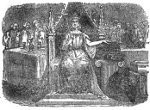 This
was one of a
number of similar advertisements cited
by the doughty J.E.N. Molesworth, Vicar of Rochdale, in a typically
trenchant article 'Dissent and Simony' in Common sense,
or,
Every-body's magazine (1842) [cover picture right] in
which
he argued that, while Dissenters were critical of the Anglican
patronage system, their own practices were far more objectionable,
being based on naked commercial opportunism, offering supposedly
lucrative openings for ministers to exploit in desirable
locations (though Chapman Street was hardly a good example of
this).
This
was one of a
number of similar advertisements cited
by the doughty J.E.N. Molesworth, Vicar of Rochdale, in a typically
trenchant article 'Dissent and Simony' in Common sense,
or,
Every-body's magazine (1842) [cover picture right] in
which
he argued that, while Dissenters were critical of the Anglican
patronage system, their own practices were far more objectionable,
being based on naked commercial opportunism, offering supposedly
lucrative openings for ministers to exploit in desirable
locations (though Chapman Street was hardly a good example of
this).
See here for an 1832 meeting in 'Mr Palmer's Schoolroom' protesting against a proposed parliamentary Bill to provide state funding for education.
The
chapel was still active in 1848.
<< History | Dissenters & Nonconformists (2) >> | Dissenters & Nonconformists (3) >> | Dissenters & Nonconformists (4) >>